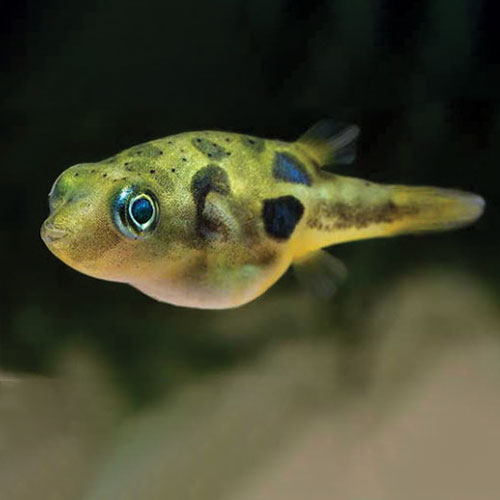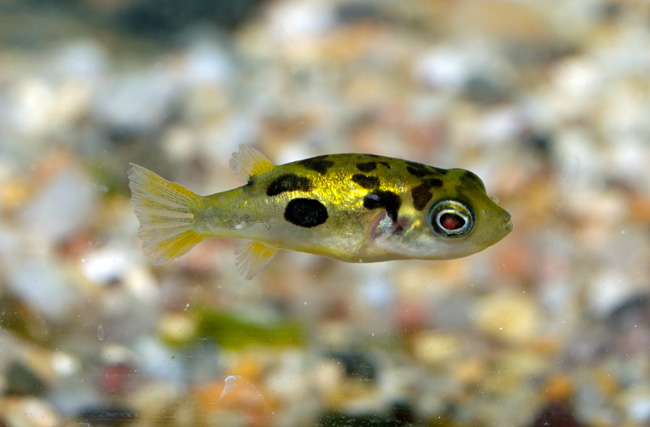
Pea puffers enjoy a variety of foods, but fresh frozen or live bloodworm is often given as a staple. Puffers never stop begging for food even when there's plenty sat on the floor of the tank! When keeping Pea Puffer Pufferfish you will need to be mindful on food waste to prevent a build-up of ammonia and nitrite, and make an effort to keep the tanks immaculate with frequent water changes (30-50% water). what they lack in size they gain courage and attitude. The imitator puffer fish is a tiny pufferfish species, very similar to the dwarf puffer fish, and has the same general care requirements.Puppy dog faces, cuteness overload but don't be fooled by these little guys. Common names: Dwarf Malabar puffer fish.Scientific name: Carinotetraodon imitator.A trio of one male and two females in a heavily planted 15-gallon is worth trying, but make sure you have a backup plan to separate your pea pufferfish if there is conflict. These tiny fish grow to just an inch long, so you can keep a single fish in a tank as small as 5 gallons.ĭwarf puffers may be cute, but they can be mean and keeping more than one can be risky. The dwarf puffer fish is an awesome little nano species that is easy to find and won’t cost more than a few dollars. Common names: Dwarf puffer fish, pygmy pufferfish.Scientific name: Carinotetraodon travancoricus.

I’ve included some key information about each species and its needs, so take note of the following stats if you’re looking for your own freshwater puffer fish: Now that you know a little more about freshwater puffer fish, let’s dive right in and meet 13 species that you can keep. With their sharp teeth and quick bursts of speed, they can do some serious damage to their tank mates.Īll in all, freshwater puffer fish are right for you if you want an interesting carnivorous pet fish with enough personality to fill its own tank! 13 Best Freshwater Puffer fish for Tropical Aquariums These freshwater puffer fish generally range from semi-aggressive to full-blown killers, so they are not good fish to simply add to your tropical community aquarium. This swimming style makes them pretty slow movers, but they can be surprisingly quick when grabbing a meal. They have fairly large tails but they generally hover around using their smaller pectoral fins. These inquisitive fish love to interact with their owners, especially around meal times!įreshwater puffer fish have an interesting way of moving through the water. Puffer fish are more like pets than display animals. However, these fish are just as popular for their behavior as their looks. Captive fish are relatively safe, but of course, they should never be eaten or fed to pets! Why Keep Them?įreshwater puffer fish are beautiful animals and often have interesting patterns and bright colors.

Although the concentration varies between species, all puffers carry a poison called tetrodotoxin in their skin. However, puffer fish have another defense if that trick fails. Puffing up makes them look much larger than they really are, and this deters predators. These fish are called puffer fish because they have the ability to expand their body size by two or three times by sucking in water or air. Puffer fish belong to the Tetraodontidae family, a group of fish that are found in fresh, brackish, and saltwater environments in many parts of the world.


 0 kommentar(er)
0 kommentar(er)
